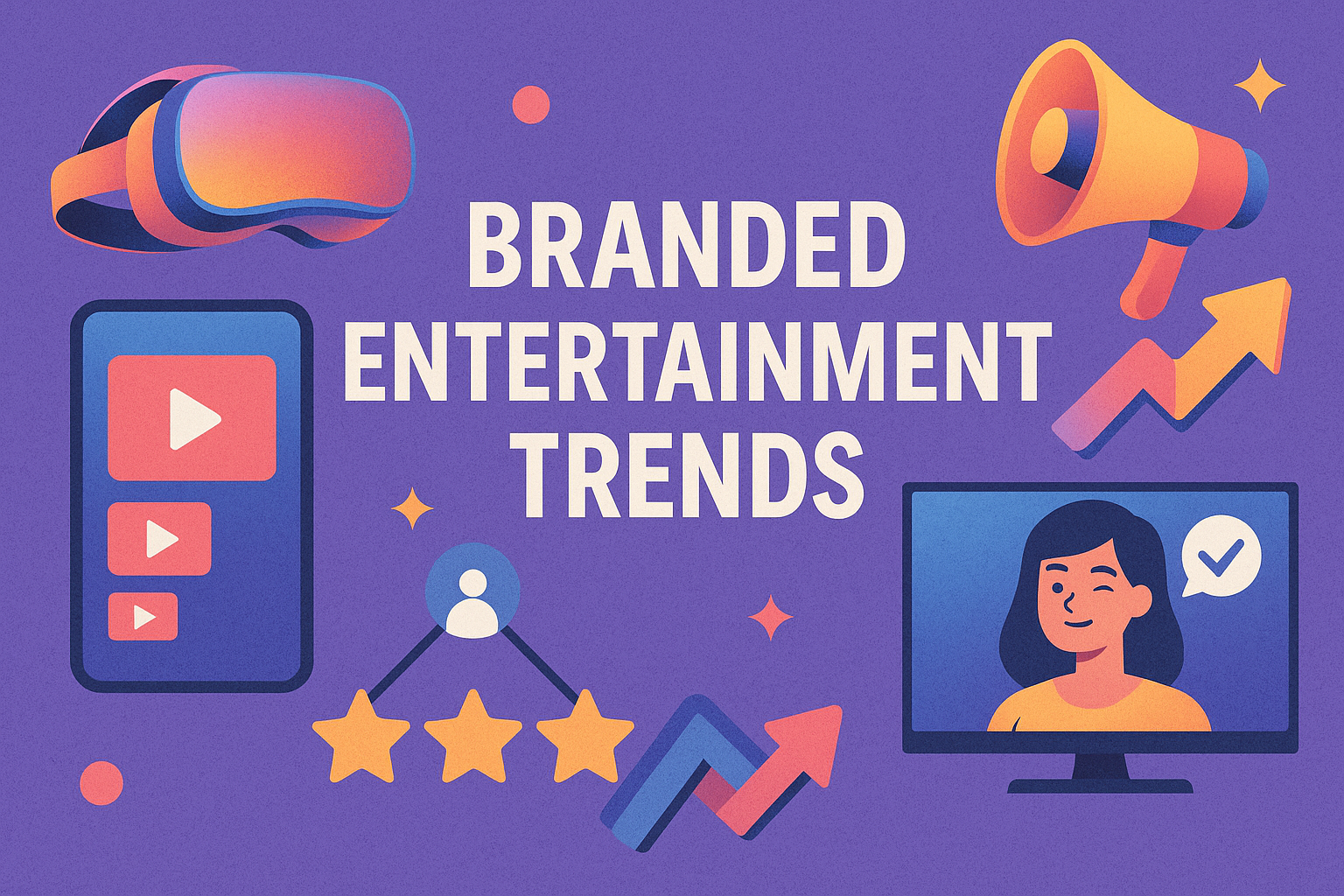Introduction: Branded Entertainment Is the New Blockbuster.
Have you ever noticed how your favorite brands are becoming your favorite story tellers? From the immersive experience to binge-worthy content, branded entertainment is not just a marketing buzzword, but it’s the future of advertising. As we enter 2026, let’s find out the trends that are changing the landscape of branded content.
1. Immersive Experiences: Brands Enter the Metaverse
Visualize when you attend a virtual concert that is supported by your preferred beverage brand or view digital art gallery organized by a technology firm. In 2025, the brands like Samsung introduced the Samsung Television Network (STN), which provided exclusive content and live events, such as Jonas Brothers’ tour on its platform . Such a move is a step in the direction of developing a branded immersive experience, which is outside of the conventional advertising.
2. Gamification: Turning Engagement into Play
Who is not aware of the fact that marketing can be fun? It is a trend for brands to now leverage the use of game elements in their campaigns with the aim of increasing engagement. For example, the McDonald’s Australia launched the “Squid Game Meal”, including the mini-game, playing on the popularity of the show . Gamification does not only entertain but also creates closer ties with the audiences.
3. Micro-Influencers: The Power of Niche Communities
The age of authenticity is making micro-influencers priceless for brands. A mind-blowing 91% of the Gen Z consumers would find more credibility in micro-influencers than regular ads. The niche audiences and their authentic involvement is what makes them perfect partners for branded content with a personal touch.
Blacksmith Agency
4. Short-Form Video: Capturing Attention in Seconds
Where people’s attention is limited in scope or time, short-form videos, therefore, has become a stable in branded entertainment. Instagram and TikTok are among platforms at the forefront, as 69% of the consumers find the most engaging branded content on Instagram . Brands are weaving short, powerful stories that take seconds to enrapture viewers
5. Purpose-Driven Content: Aligning with Values
Consumers are more and more driven by brands which care about something. 76% of the consumers in 2025 preferred engaging, story-driven brands over the old fashioned advertising . Branded entertainment following social and environmental values not only creates trust but also creates loyalty. ( Amra and Elma LLC-Forbes)

6. Data-Driven Storytelling: Personalization at Scale
Personalized content is no longer a luxury – it’s an expectation. Brands are using data to create personalized narratives that resonate with person’s preferences. This practice makes user experience better and makes branded campaigns more effective.
7. Brands as Content Creators: The Rise of In-House Studios
Companies are not only advertisers; they’re becoming content creators. The Knot Worldwide entered the reality TV business, creating unscripted shows carrying modern wedding experience . Brands will be able to control their narratives and build stronger ties with audiences if they develop their own content. (Business Insider)
8. Cross-Platform Storytelling: Seamless Brand Narratives
Branded entertainment is a matter of consistency. Brands are integrating narratives throughout various platforms, having a laminar flow of the narration, even if the viewer shifts platforms. Such an omnichannel strategy will improve brand recall and amplify message.
9. Measuring Impact: Beyond Views and Likes
Results of branded entertainment are not considered purely through views and likes; it’s about engagement and ROI. Companies are using sophisticated analytics to evaluate the performance of their content where metrics such as audience retention rate, conversion rate, and brand sentiment are used.
Conclusion: Embracing the Future of Branded Entertainment
Globalization and changing user experience procedures have led to the expansion of the marketing sphere to include branded entertainment. Looking forward, in 2026, branded entertainment looks to evolve as it combines storytelling with technology to make the experiences more interactive. Roundaged with such trends, brands will be able to make more profound links to their target audiences and remain in the vanguard of the constantly evolving marketing world.
FAQ’S

